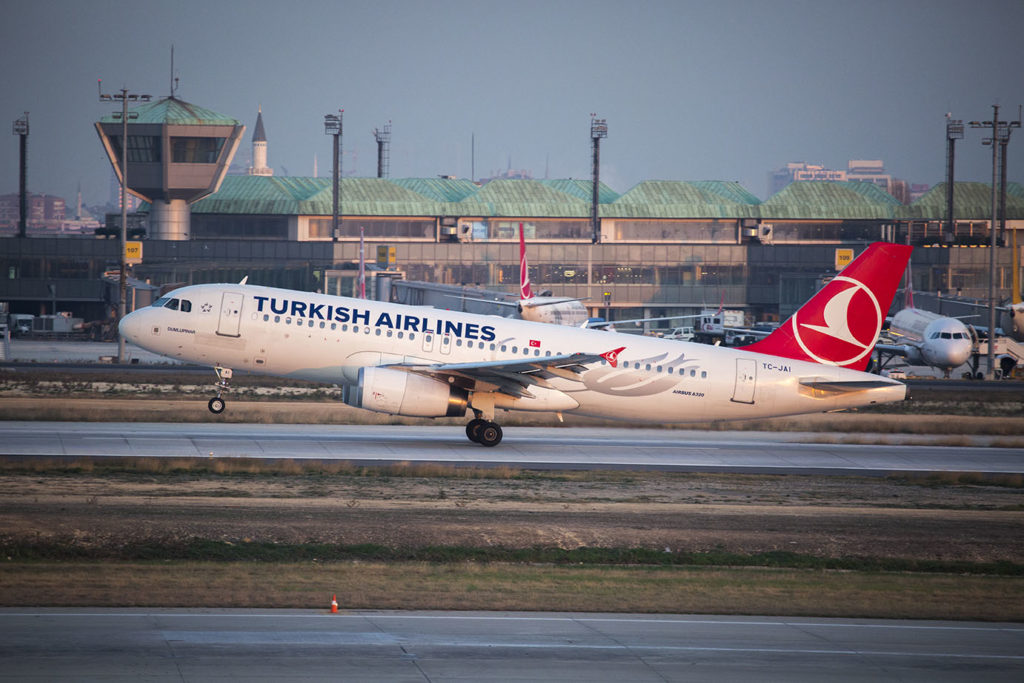Photo credit: Turkish Airlines
Turkish Airlines was firing on all cylinders in the first quarter with strong results during a historically weak period.
The Istanbul-based carrier posted a $241 million operating profit, a $233 million net profit, and a 3 percent operating margin during the three months ending in March. While that margin may seem low following Turkish’s stellar performance last year, it actually represents a positive 10 percentage point swing from its margin in the first quarter of 2019. The January-to-March period is traditionally weak for the airline.
Turkish’s revenue was up 43 percent year-over-year to $4.35 billion in the first quarter, a record for the airline in the period. Unit revenues increased 18.8 percent and unit costs excluding fuel 5.5 percent compared to 2022.
“This quarter’s traffic results and current forward bookings reveal confidence about the demand strength for the rest of the year,” Turkish Chief Financial Officer Murat Seker said during an earnings call Thursday. “Also, we expect the industry’s supply [and] demand imbalance to continue in 2023.”
Seker referred to the supply issues constraining the airline industry’s ability to fully recover and grow out of the pandemic. Staffing issues remain an issue in Europe, new Airbus and Boeing planes continue to arrive late, and a shortage of parts for new engines, particularly geared turbofans made by Pratt & Whitney, have forced airlines around the world to ground aircraft while they await parts.
Turkish, Seker said, does not face many of the same limits on its operations, though some new Airbus and Boeing aircraft are expected to arrive late.
Helping to boost Turkish in the first quarter was the rebound in travel to Asia. The Star Alliance carrier grew capacity more than 50 percent year-over-year to East Asia — its least recovered region globally — and grew system capacity by nearly 34 percent. Turkish had not yet recovered to pre-pandemic capacity levels in the first quarter of last year, though it did by the summer.
Turkish also benefits from being one of the few global airlines still flying to Russia. This has anecdotally driven up fares and yields on routes to the country given the limited flight options. Turkish served three Russian destinations in the first quarter: Kazan, Moscow, and St. Petersburg, according to Diio by Cirium schedules. In its first quarter results, Turkish said the impact of Russia’s war in Ukraine and the closure of Russian airspace to most Western carriers was “limited.”
Connecting traffic via Turkish’s Istanbul hub was up 25 percent over 2019 levels. That’s yet a further example of the airline’s rise as a global superconnector airline akin to Emirates and Qatar Airways.
Looking ahead, Turkish anticipates another stellar year. It forecasts $19 billion in revenues on 15-20 percent year-over-year capacity growth in 2023. Second-quarter capacity is due to rise 10-15 percent over last year, and new routes to Detroit, Palermo, and Osaka Kansai are planned later in 2023. Unit revenues are forecast to increase in the low single digits year-over-year.
Turkish is also beginning to prepare for a major order for 200-300 new aircraft, Seker said. This deal would support its growth ambitions to operate roughly 800 planes by 2033, up from a forecast 435 at the end of this year. Turkish plans to issue a request for proposals to airframers “very soon” for a deal, he said.
Special Offer: Choose From Quarterly or Annual Subscription Plans
{{monthly_count}} of {{monthly_limit}} free stories left to read
SubscribeAlready a member? Sign in here
You Need an Airline Weekly Susbcription to Read This Story
Your story count resets on {{monthly_reset}}
Already a member? Sign in here
